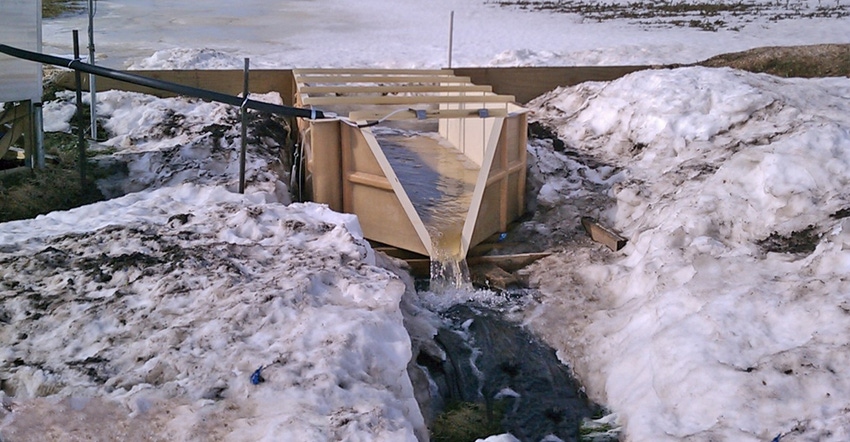August 22, 2017

Happy New Water Year!
Oct. 1 marks the beginning of the 2018 water year. Our Discovery Farms program, and many water monitoring programs, use the hydrologic or water year, since precipitation that falls after crops mature and soils freeze tends to be stored in the soil as recharge or remains frozen until spring. Collecting 12 months of data from October through September provides a better correlation between precipitation and runoff.
Oct. 1 also marks the transition from one crop to another, as postharvest tillage and nutrient applications set the stage for next spring’s planting season and runoff season.
Last month, we looked at the influence of a few large storm events on erosion. This month we will look at the same data, but focus on long-term trends in water movement.
Keep in mind that water data fluctuate much like crop yields from year to year, due to both rainfall amount and timing. So while runoff events are possible throughout much of the year, long-term data sets help identify periods when runoff is most likely. Understanding when water moves can help us consider the relationship between farming practices and potential water impacts.
The Discovery Farms programs of Minnesota and Wisconsin have been collecting surface runoff and tile flow data since 2002 on farms across the upper Midwest. During this time, about one-third of all surface runoff volume occurs in the month of March, as snow melts and the frozen soil season ends. Another 38% of surface water runoff occurs more evenly from April through June, as spring rains fall on relatively more saturated soils, exceeding the water needs of the emerging crop.
Water quality varies throughout year
Water quality during these times is very different. March runoff tends to be lower in sediment, but often contains more dissolved phosphorus and nitrogen. Runoff from April through June tends to contain more sediment. Incorporation of fall-applied nutrients and modest tillage to incorporate crop residues can reduce nutrient content of snowmelt runoff. In landscapes where erosion is a bigger concern, less tillage and more residue to protect against soil erosion may be a bigger priority.
In tile-drained fields, about 60% of total flow occurs from April through June. This water is generally very low in sediment and phosphorus, but can carry nitrates to surface waters. Reducing nitrate losses in these fields can be achieved by delaying nitrogen applications until late fall, when soils are cool, or applying in the spring or in-season.
Early-fall applications allow more time for bacteria in the soil to convert applied nitrogen to the nitrate form, which is the form readily movable in water. Nitrogen in the ammonium form is not at risk for leaching, especially in the soils most likely to be tile-drained. Nitrogen stabilizers can help delay conversion and reduce nitrate losses via tile. Applying later, or nearer the season of peak crop uptake, increases the portion of nitrogen not yet converted to nitrate and less at risk for loss.
Once crops are well-established, precipitation and crop needs are in better balance, resulting in little runoff and greatly reduced soil and nutrient losses from July through February.
Formo is the executive director of the Minnesota Agricultural Water Resource Center.
About the Author(s)
You May Also Like






